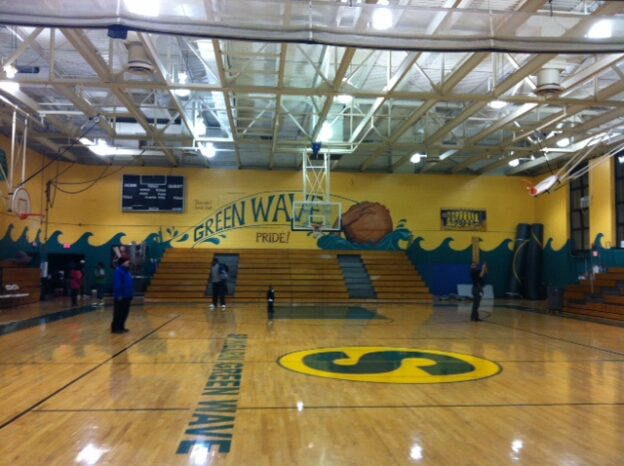
D.C. has always been a major sports town. There is a rich history here that spans more than a century. Even more than that, sports have always served a higher purpose than wins and losses in the capital city. Athletics in the district has long been a haven for African Americans and provided a space for them to flourish and be appreciated. With a legacy dating back to Edwin Henderson, basketball in D.C. has been a huge part of the Black experience in the city. The imprint that D.C. has left on the game has shaped the landscape of the sport and its history cannot be told without the contributions that have come out of that 68 square miles of land. And sitting in the shadows of RFK Stadium, a building that once housed one of the most notoriously racist franchises in all of sports sits a school that is steeped in Black athletic excellence. That school is Joel Elias Spingarn Senior High School.
Spingarn has been instrumental in several areas of Black achievement. This should come as no surprise given the school’s namesake. Joel Elias Spingarn was heavily involved in the NAACP, serving as its president from 1930 until he died in 1939. He established the Spingarn Medal which is awarded annually by the NAACP for outstanding achievement by an African American. An impressive list of recipients which comprises the likes of George Washington Carver, Thurgood Marshall, and Langston Hughes, the Spingarn Medal has become a symbol of great prestige. As the last segregated high school built in Washington D.C., having been erected just two years before the Supreme Court decided against school segregation in the Brown vs. Board of Education case, the Black excellence that the school has come to represent serves as a perpetual middle finger to a disgusting era in American history. And while Spingarn has impacted the city in many ways, the lasting legacy of the school that will ring the loudest through time was created in the gym. Green Wave basketball is one of the most storied programs in DC history and with the school closing its doors permanently in 2013, it is the achievements of the basketball team that keeps the memory alive. The building now sits empty, unattended, and dilapidated. Despite being added to the National Register of Historic Places in 2014, the hulking 225,000 square foot structure now houses rodents and is at the mercy of vandals due to not being sustained by the city’s government. Sitting across from Langston Golf Course, which is steeped in history itself, it’s sad that the memories that were created there will not have the opportunity to be cherished as they should be. Like much of DC’s basketball history, Spingarn’s contributions are not properly preserved but it is virtually impossible to erase what was built at the corner of Benning Rd. and 26th St.
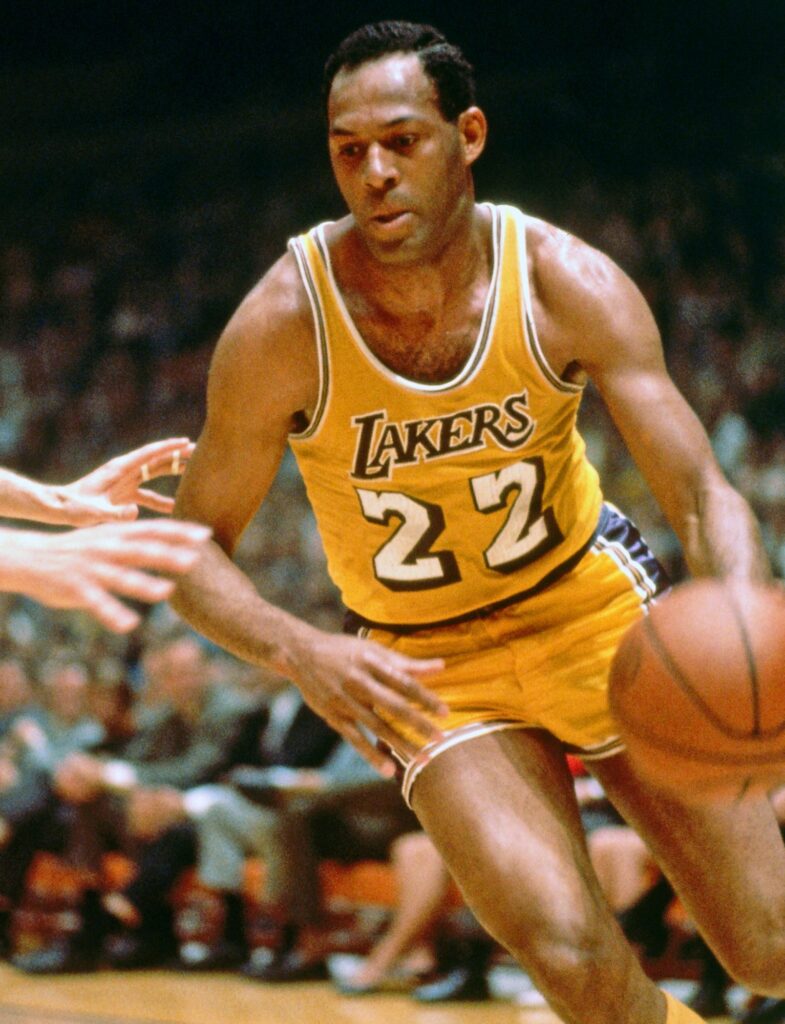
Spingarn has a robust basketball history that started forming immediately. Through the years, the program has produced two Hall of Famers and top 50 NBA players. The man who started the hoops lineage at the school is none other than Elgin Baylor. Baylor walked through Spingarn’s doors in 1953 and in his only season with the Green Wave, he laid the foundation for what would eventually become arguably the greatest career in D.C. basketball history. Baylor became the first African American to be named to the All-Met team and set a DCIAA single-game scoring record that still stands today. He then went on to have a wildly successful collegiate career where he average 31.3 points per game and 19.5 rebounds per game while taking Seattle University to its only Final Four in school history, reaching the championship game where they fell to the University of Kentucky. Perhaps one of the most understated aspects of Elgin Baylor’s career is that he quite literally saved the Lakers franchise from financial ruin. The team had been struggling since the departure of George Mikan and then-owner Bob Short tried to get Baylor to leave school early on two occasions to join the pros. Initially rejecting the idea after his sophomore season, he joined the Lakers after his junior year after being taken #1 overall in the 1958 draft. In the words of Short, “If Baylor would have turned me down then, I would have gone out of business. The club would have gone bankrupt.” Can you imagine the NBA without the Lakers? A product of a public school in the Northeast sector of Washington D.C. saved one of the most historic franchises in the history of sports. Baylor then went on to revolutionize the game and the style of play. Bill Simmons said Baylor “turned a horizontal game into a vertical one” and Bill Russell famously dubbed him “The Godfather of Hang Time”. Baylor’s acrobatic prowess went on to inspire some of the game’s greatest players like Dr. J and Michael Jordan. A style that was incorporated into the league more than 60 years ago is still influencing the way the game is played today. Baylor went on to be inducted into the Naismith Memorial Basketball Hall of Fame and was named to the NBA’s 35th, 50th, and 75th-anniversary teams. And besides all that, anybody that can get Wilt Chamberlain to come to DC for an entire summer to play pickup is a certified legend. Elgin Baylor is undoubtedly one of the greatest players in NBA history and while the school that birthed his career is now abandoned, his contributions to basketball will always demand that the Spingarn name be invoked in every hoops conversation around the city.
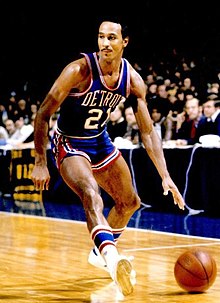
While Baylor is Spingarn’s most accomplished alum, there was no shortage of talent to come out of the school. Shortly after he left, Dave Bing and Ollie Johnson emerged to continue the run. The duo went to back-to-back city title games in ’60 and ’61. After losing to an Archbishop Carroll team led by John Thompson in 1960, they came back to claim the title the next year over local powerhouse, DeMatha Catholic. Bing and Johnson’s careers had opposing trajectories as Bing went on to become an NBA Hall of Famer and named one of its 50 greatest players and although Johnson was drafted 8th overall by the Boston Celtics in 1965, he never saw any NBA action. He went on to play overseas for three years before hanging it up. Meanwhile, Dave Bing went on to star at Syracuse University and play 12 years in the league. Like his predecessor at Spingarn, Bing had a hand in revolutionizing basketball in some facet. He was one of the first point guards who relied on scoring as much as distributing the ball. If you look around the league today, that style is embraced and encouraged. Bing was about 40 years ahead of the curve as that style of play wasn’t accepted until fairly recently. He went on to be named Rookie of the Year and became a 6-time all-star. Bing also got the opportunity to play for his hometown team for two years, signing with the then Washington Bullets for the ’75 and ’76 seasons. He started his career with the Detroit Pistons where he shared a backcourt with Jimmy Walker, who is the father of Jalen Rose. After his playing days, Bing went on to become an astute businessman and later served as mayor of Detroit. Another legend birthed out of the belly of the Green Wave.
In the ’70s, Earl Jones continued the tradition of basketball excellence at Spingarn. He only played one season there but he averaged 20 points and 15 rebounds while leading them to a city title. Jones went on to play for one of the greatest Division II teams in history at UDC. The Firebirds went to back-to-back national championship games during Jones’s tenure, taking home the top spot in 1982. They defeated a Virginia Union team, which was a perennial D II powerhouse at the time and had future NBA veteran Charles Oakley on the squad. He was also named NCAA Division II Player of the Year. Led by legendary coaches, Will Jones and Ed Meyers (more coming on Coach Meyers this summer from Finest Magazine), the Firebirds became one of the best college programs in the area, yes including the big dogs, with Earl Jones as their centerpiece. While he was selected with the 23rd pick in the 1984 draft, Jones’s pro career was marred by injuries. He only played two games for the Lakers in his rookie season and hung on for a couple of 10-day contracts the following year with the Milwaukee Bucks but that was the extent of his time in the league.
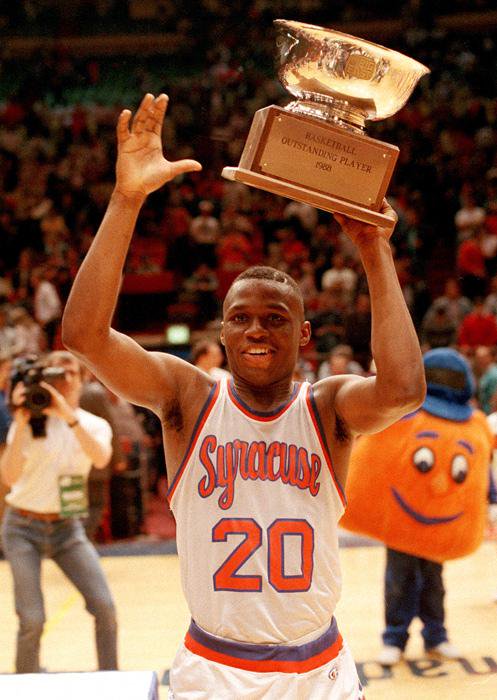
The ’80s saw history repeat itself in a way at Spingarn. We saw a guard/forward tandem arise to dominate basketball in the city, similar to what Dave Bing and Ollie Johnson did decades prior. And just like their predecessors, the guard out of the duo went on to have a long NBA career while the forward sought his professional opportunities elsewhere. The players I’m speaking of are Sherman Douglas and Michael Graham. Douglas and Graham left their mark on Spingarn’s rich hoops legacy and DC basketball in general. Sherman is considered one of the best point guards in DC history. He was given the nickname “The General” due to his ability to lead his team and control the game. It’s also a play on his first name (a reference to Union Army General William Tecumseh Sherman, if you’re unfamiliar I feel sorry for your elementary school history teacher). Douglas was the epitome of a point guard. He was a maestro. But he also had a knack for scoring. Sherman perfected the floater in the lane which was later adopted by another DC legend, Curt Smith (more to come on him at a later time). Oh speaking of DC legends who will be revisited later, you know that bop pretty much all DC guards have on the court? One of Douglas’ Spingarn teammates pretty much birthed the modern era of DC ball handlers. His name is Melvin Middleton. But I digress. Sherman led the Green Wave to a perfect season in 1985, going 31-0, and Douglas capped off his high school career with a team-high 24 points in the Capital Classic. And they both followed up their highly successful high school careers with history-making tenures in college. Sherman Douglas went on to become one of the greatest Big East players of all time. And this was when the Big East was the BIG EAST. He was a 3 time First Team All-Big East selection and he would go on to set the NCAA career assist record (which has since been broken). With Douglas at the helm, Syracuse made their first Final Four under Jim Boeheim in 1987. This was the second time the Orangemen would be blessed by Spingarn as Dave Bing took the trip up north in the 60s. Sherman went on to have a moderately successful NBA career, getting an All-Rookie First Team nod in 1990 and following that up with a very stellar 18.5 points and 8.5 assists in his sophomore season with the Heat. Douglas would go on to play 12 years in the league and averaged 11 points and 6 assists per game.
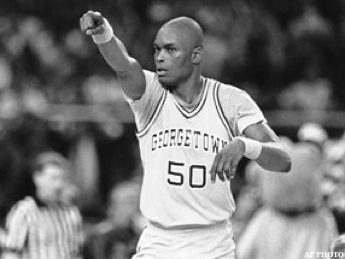
The Spingarn effect on Georgetown indirectly started long before John Thompson took the helm at the prestigious university. He grew up in the shadows of the school and when his Carroll team played the Green Wave in the 1960 title game, Thompson recognized the grit, skill, and toughness that Green Wave basketball personified. Although Carroll’s team won the game, he said that Spingarn had a tremendous effect on his basketball life. It began with watching local legend, Elgin Baylor, play for them a few years earlier and continued when Thompson got to experience it firsthand. So when Big John got the head coach job at Georgetown he knew exactly where he was going to go for talent. He snatched up Billy Lynn, a Spingarn big man, for his first recruiting class with the Hoyas then in the next decade, he returned to Benning Rd. to get Michael Graham which would prove to be a monumental decision in stamping Georgetown’s place in history. Graham would help the Hoyas capture their only NCAA championship and made John Thompson the first Black coach to win a title. Michael would have a monster game in the 1984 Final Four with 22 points and 11 rebounds and would score 14 points in the championship game to secure All Final Four team honors along with his teammate, Patrick Ewing. Sherman Douglas and Michael Graham, two kids from a public school in NE Washington DC, were instrumental in establishing the superiority of one of the best conferences in college basketball history in arguably its greatest era. You cannot tell the story of Big East basketball without highlighting the contributions of these two guys.
The basketball lineage at Spingarn runs longer than a CVS receipt. The Green Wave have been competitive since its doors opened in 1952 until they closed in 2013. Its players have impacted the game on every level from high school (obviously), college, and the pros. A Spingarn alum even had a hand in the greatest basketball revolution in history outside of the NBA. Hugh Jones, who you probably know as “Baby Shaq”, was a cornerstone of the And 1 movement. This was a cultural phenomenon that shook the basketball world to its core and one of Spingarn’s finest was smack dab in the middle of it. Even guys like Clarence “Bootney” Green who was a standout at Spingarn and tore it up in the summertime at the Urban Coalition (more to come on this), one of the best Pro-Am leagues ever, went on to become Division II Player of the Year at Cheyney State. Greene also famously had a hand in brokering a meeting between John Thompson and notorious drug kingpins, Rayful Edmonds. The Green Wave have put their entire handprint on the game and the resulting impact can’t be erased. There was only one high school in all of America with two players on the NBA 50th Greatest Players list. I’ll let you take a wild guess as to which school that is. Even as the building that housed such greatness lay abandoned and the championship trophies and banners have been allowed to remain hidden from society, the Spingarn basketball tradition will never die.

Pingback: DC Hoops Untold Stories: Urban Coalition | Lyons Den Sports